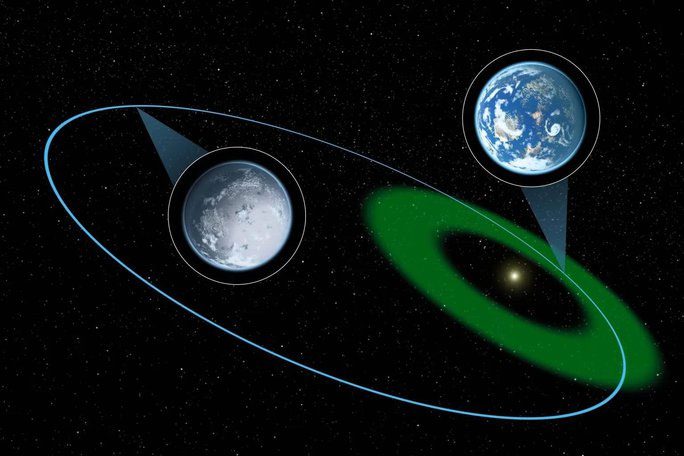The Earth would have been more hospitable to life if a massive and powerful planet had altered its orbit.
New research from the University of California, Riverside (UCR) has modeled our Solar System and examined whether Earth actually achieved the perfect conditions for life to thrive. The answer is no.

Graphic depicting Earth and potential locations for habitation according to different models, with the green area representing the “habitable zone” of the Solar System – (Image: NASA/JPL Caltech)
The issue lies in its orbit; if it were even slightly more eccentric, meaning a longer elliptical shape instead of the nearly circular orbit we have today, Earth might have supported more life and provided more habitable regions.
As many previous studies have indicated, Earth’s orbit is heavily influenced by Jupiter – a planet with a mass 318 times that of Earth and the first planet in the Solar System.
“If Jupiter’s position remained the same but its orbital shape changed, it could actually enhance the habitability of this planet,” said lead author Pam Vervoort, as reported by SciTech Daily.
Jupiter is so large and has such strong gravitational force that throughout the history of the Solar System, it has played a crucial role in determining the fate of its sibling planets, particularly the four terrestrial planets in the “inner Solar System”: Mercury, Venus, Earth, and Mars.
The explanation in the publication in the scientific journal Astronomical Journal states that the habitable temperature range for a planet is between 0 and 100 degrees Celsius – the temperature at which water is in a liquid state. This may not sound ideal to you, but it is the range in which various life forms can adapt and survive.
If the orbit were more eccentric, many of Earth’s “dead” regions with temperatures below 0 could have the opportunity to move closer to the Sun as it enters the narrow area of the elliptical orbit, thus reaching temperatures more suitable for life and expanding the “habitable zone” of Earth.
This may not bode well for humanity, but if it had occurred, many more life forms could have emerged and evolved better during Earth’s dawn.
This study not only provides insights into the factors that shaped our planet today but also offers important parameters for astronomers to recreate models of other star systems and identify potentially habitable planets.


















































